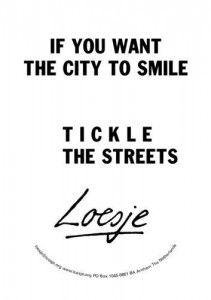Prehensile feet
One’s method of transport determines what one sees. A walking tour of a new city gives opportunity for far more detail than a driving tour. A cycle through the countryside gives one the opportunity to hear birds and smell the hot strawberries in a July field. I’ve even heard the barley grains opening on a hot August day, a quiet crackling sound moving throughout the field, something only audible to a few people on bicycles gliding quietly on roads nearby.
 Recently, I have been walking the streets of a new city, and it feels as if I am getting to know the streets through touch of my feet on the streets. Although I am wearing shoes – it is a temperate European city, after all – I feel as if my toes are reaching and grasping the soil of this new place, as if walking is akin to feeling the contours of this place almost like fingertips caressing a small stone sculpture.
Recently, I have been walking the streets of a new city, and it feels as if I am getting to know the streets through touch of my feet on the streets. Although I am wearing shoes – it is a temperate European city, after all – I feel as if my toes are reaching and grasping the soil of this new place, as if walking is akin to feeling the contours of this place almost like fingertips caressing a small stone sculpture.
I had forgotten about the feeling of warm peat between my toes on a sunny June day on a blanket bog in Ireland. The peat was warm and soft, the Sphagnum moss cushiony but full of cool water, and the rocks gritty and damp. It’s an experience I recommend!
In the city, one doesn’t really want to walk with exposed soles and bare toes on the concrete pavements with grit and broken glass. But walking not only gives one the sense of touching the city but also of having time to think about the different businesses and shops, to observe window sill ornaments, to sense the neighbourhoods changing on a gradient of distance, whether from a lovely park or a metro stop. Walking takes time, but it gives us time to think, and also to observe. It is easy to think of the time as lost, but, in fact, it is mediation time, thinking time, brain-at-rest time, all of which help us be effective in thinking in other times. You can even say hello to other people tromping past you – a smile shared between strangers is becoming rare in cultures where everyone drives.
Walking is people-powered, giving us both the movement our bodies crave and also avoiding use of fossil (or bio) fuels to drive and stop and rev and drive, through crowded streets that were not designed for the numbers or size of the cars of today. When one walks, of course, one arrives immediately: there is no circling around and around seeking a parking place.
In a city where horses may be less at home than they are in Nicaragua, then perhaps we should think about walking more. And taking the time to be able to walk to our next destination.

Leave a Reply